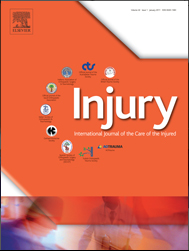
Hand & Wrist
Immobilization vs. no immobilization following volar plate fixation of a distal radius fracture
Injury. 2019 Feb;50(2):386-391.39 patients with distal radius fractures undergoing open reduction and internal fixation (ORIF) with a volar locking plate were randomized to receive 2 weeks of post-operative immobilization with a plaster splint or no immobilization. The primary outcome of interest was pain as measured on a Visual Analog Scale. Secondary outcomes included tramadol (opioid) use, DASH score, range of motion (wrist flexion-extension; forearm rotation), patient satisfaction, wrist edema and incidence of complications. Follow up was performed up to 6 months. The results from the trial found no significant differences between the plaster splint group and the no splint group in all outcomes at all measured time points.
Unlock the full article
Get unlimited access to OrthoEvidence with a free trial
Start TrialCritical appraisals of the latest, high-impact randomized controlled trials and systematic reviews in orthopaedics
Access to OrthoEvidence podcast content, including collaborations with the Journal of Bone and Joint Surgery, interviews with internationally recognized surgeons, and roundtable discussions on orthopaedic news and topics
Subscription to The Pulse, a twice-weekly evidence-based newsletter designed to help you make better clinical decisions
Exclusive access to original content articles, including in-house systematic reviews, and articles on health research methods and hot orthopaedic topics
Or continue reading this full article
Register Now

Subscribe to "The Pulse"
Evidence-Based Orthopaedics direct to your inbox.




































